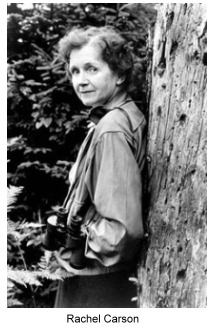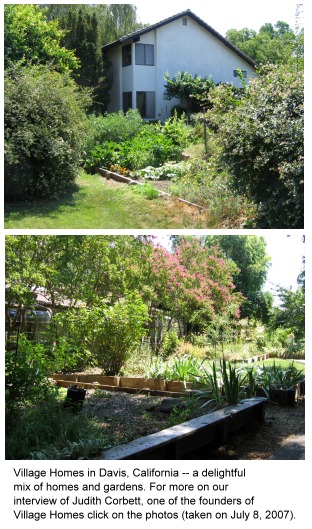 The word “ecology” literally means the study of homes (“eco”= homes; “ology” = the study of). In common use, however, ecology denotes the environment that surrounds our human existence and how people interact with it.
The word “ecology” literally means the study of homes (“eco”= homes; “ology” = the study of). In common use, however, ecology denotes the environment that surrounds our human existence and how people interact with it.
Ecology was powerfully brought to public attention with the publication of Rachel Carson’s The Silent Spring in 1963, exposing the devastating effects of agricultural insecticides on wildlife and on the food chain.
 Six year later, landscape architect and planner Ian McHarg focused on how ecology can be taken into account in planning and design in his landmark book, Design With Nature.
Six year later, landscape architect and planner Ian McHarg focused on how ecology can be taken into account in planning and design in his landmark book, Design With Nature.
With the establishment of the U.S. Environmental Protection Agency in 1970, and the passage of the National Environmental Policy Act (which required “environmental impact statements” for federally funded projects having significant impacts on the environment), ecological considerations became part of the everyday planning vocabulary.
It is logical that ecology should be integral to planning. The natural environment is the community’s birthplace. Terrain, soils and tree cover, underground water, surface streams, vegetation, and wildlife all form an interdependent unity of impact and adaptation. The goal of ecological studies, as applied to community and regional development, is to make the human impact on the elements of the environment mutually supportive and integrative with the whole, becoming one with the order of the natural world.
The protection of the quantity and quality of water in underground aquifers and wetland areas is a key concern when planning with ecological considerations in mind. Care is given to avoid building on and polluting natural aquifer recharge areas. Yet, with careful planning, even a site that includes large areas of flood plain or swamp land, may be developable — while preserving its wetland functions. This was demonstrated in The Woodlands, a Texas new town built in the 1970s with the guidance of Ian McHarg and following his ecological principles.
 Similarly, Village Homes, built in Davis, California, in 1975 became a model for ecological application to a suburban neighborhood. It utilized natural drainage channels and grassed “soft” channel recharge areas in lieu of pipes and hard-sided channels to handle the increased rainwater runoff resulting from conversion of the site to a residential neighborhood.
Similarly, Village Homes, built in Davis, California, in 1975 became a model for ecological application to a suburban neighborhood. It utilized natural drainage channels and grassed “soft” channel recharge areas in lieu of pipes and hard-sided channels to handle the increased rainwater runoff resulting from conversion of the site to a residential neighborhood.
At Village Homes, the width of the street paving was narrowed to reduce the impervious area, minimizing runoff. Grape arbors were located between buildings and adjacent to drainage swales to absorb ground water, as well as to interject agriculture as an immediate, visible, and continuing presence in the residential environment.
When ecology is considered as part of a the comprehensive planning process, the community’s natural systems (its soils slopes and land forms; underground water and surface drainage patterns; tree cover; grassland areas; ponds and wetlands; and wildlife) are all carefully mapped and studied in an effort to understand their role and to protect them from adverse human impacts.
Ecological design calls for interacting with these natural systems to meet human needs in a manner that results in minimum disruption and maximum retention of the natural environment.